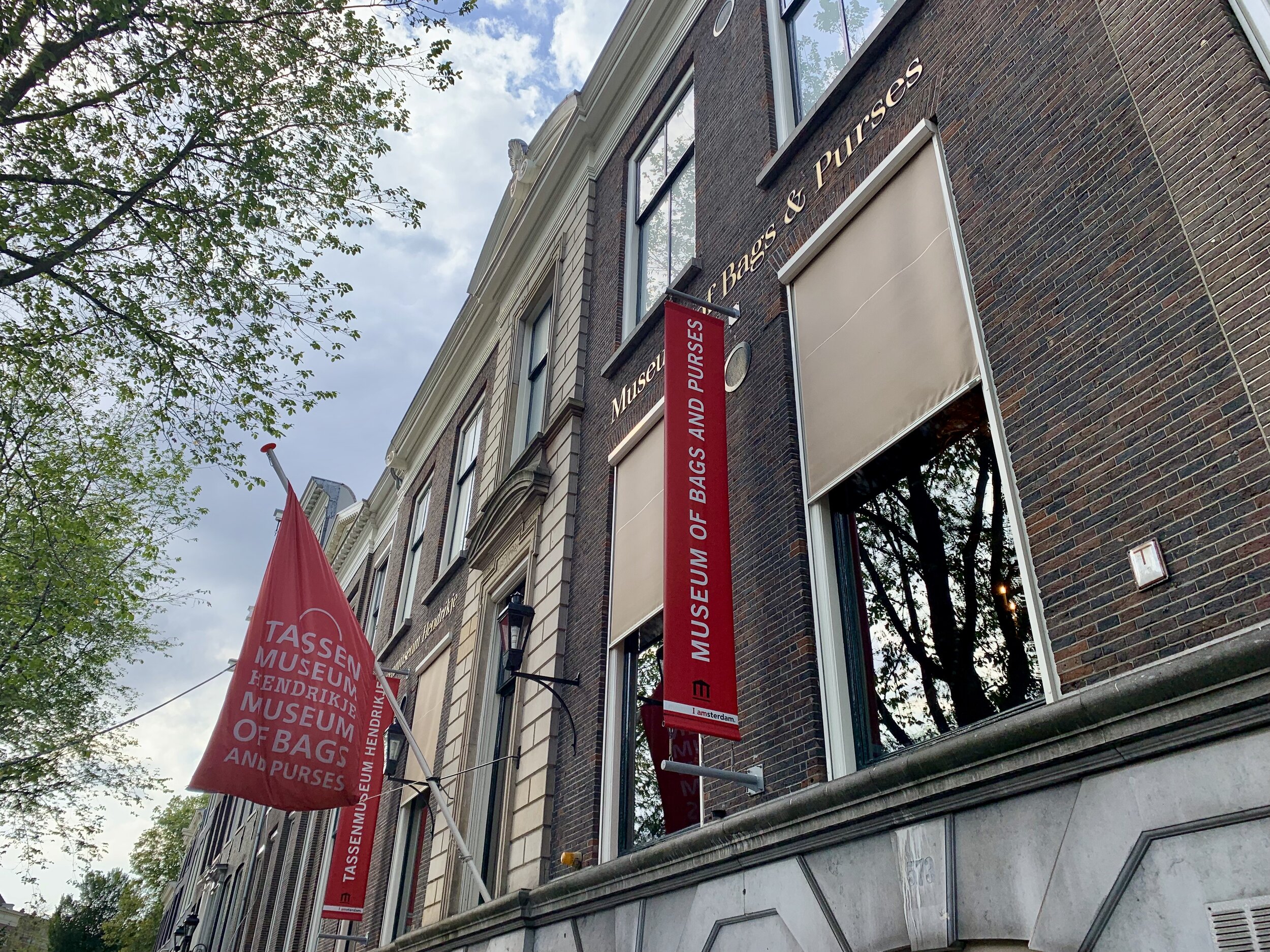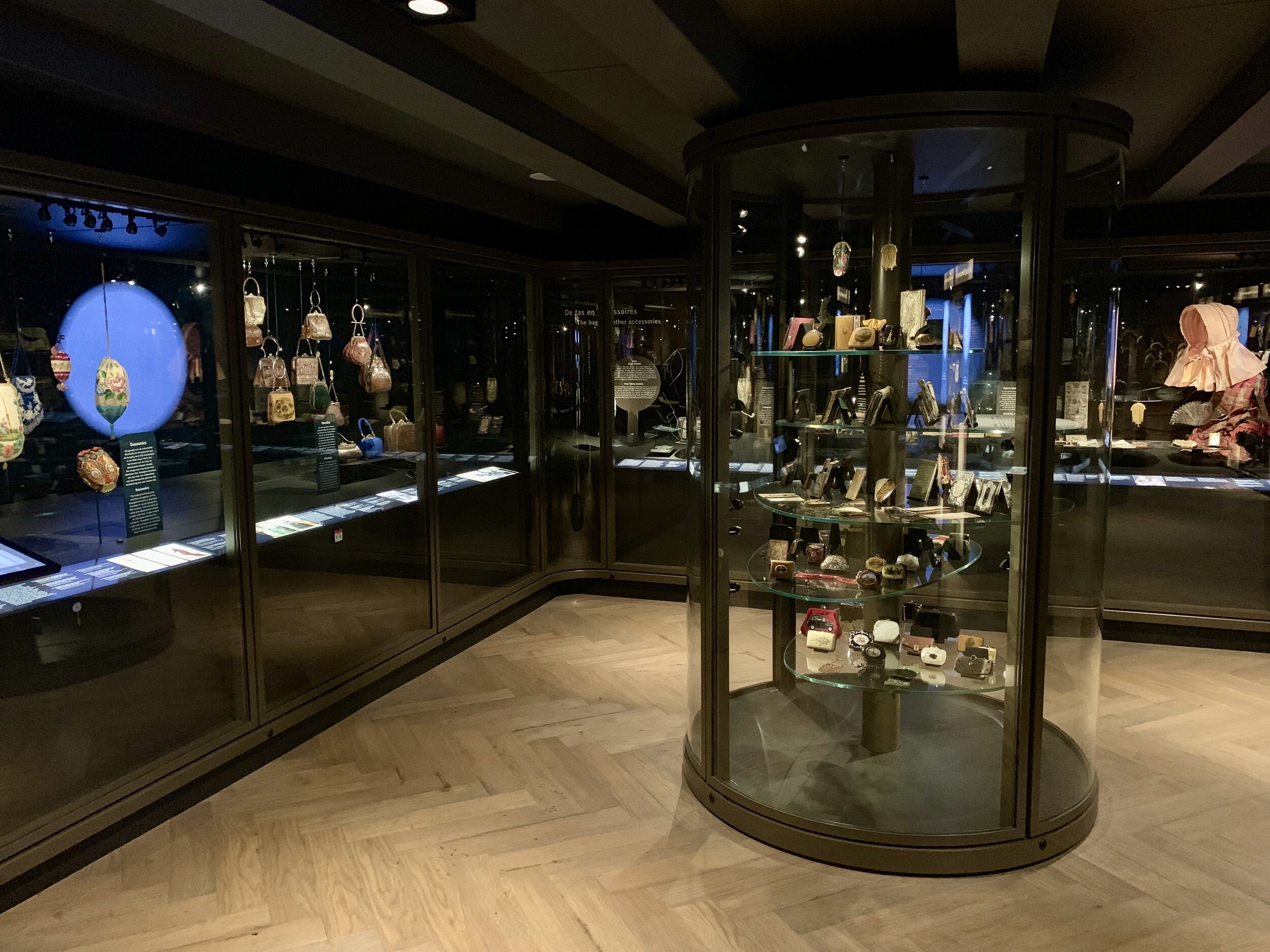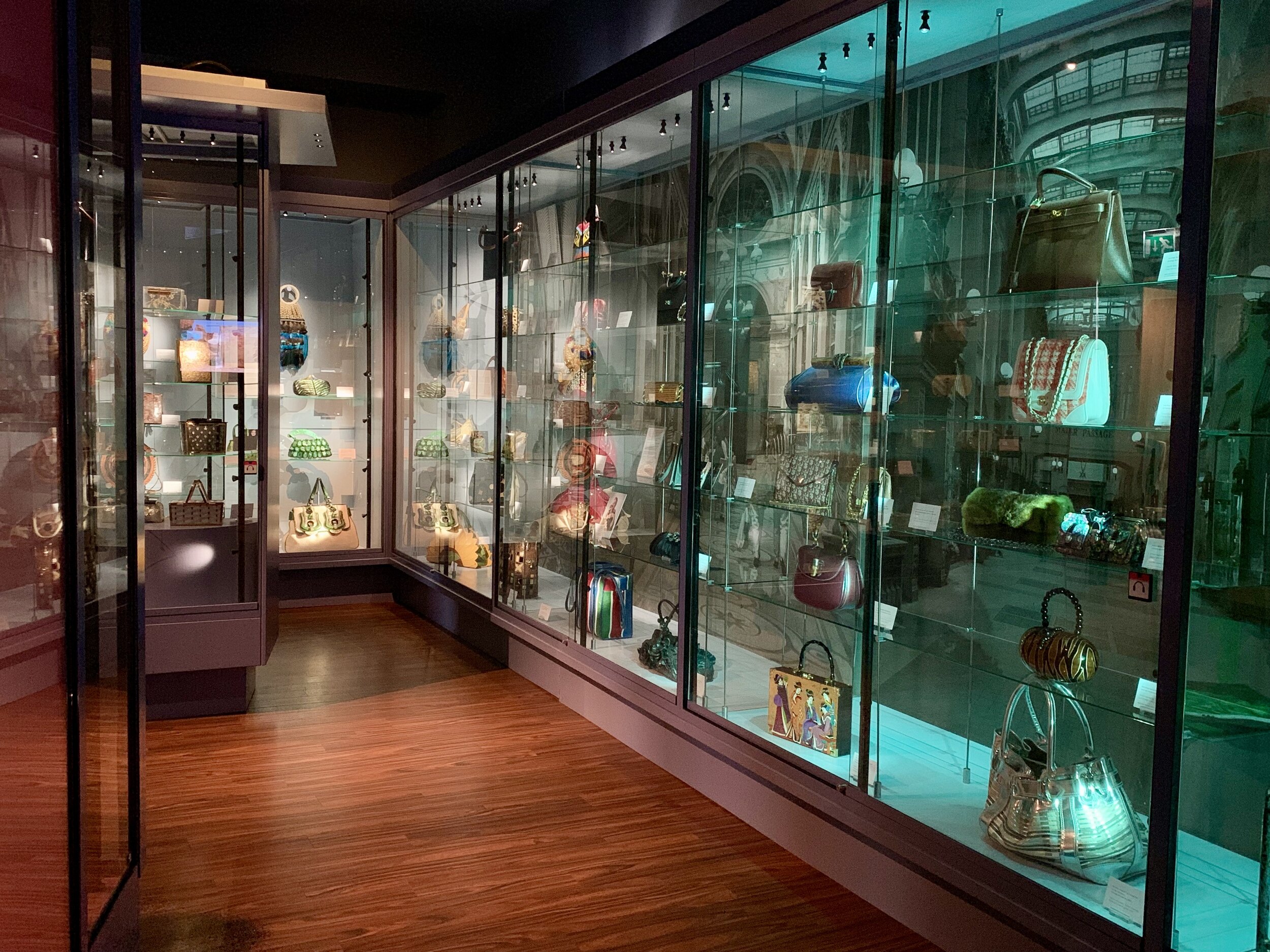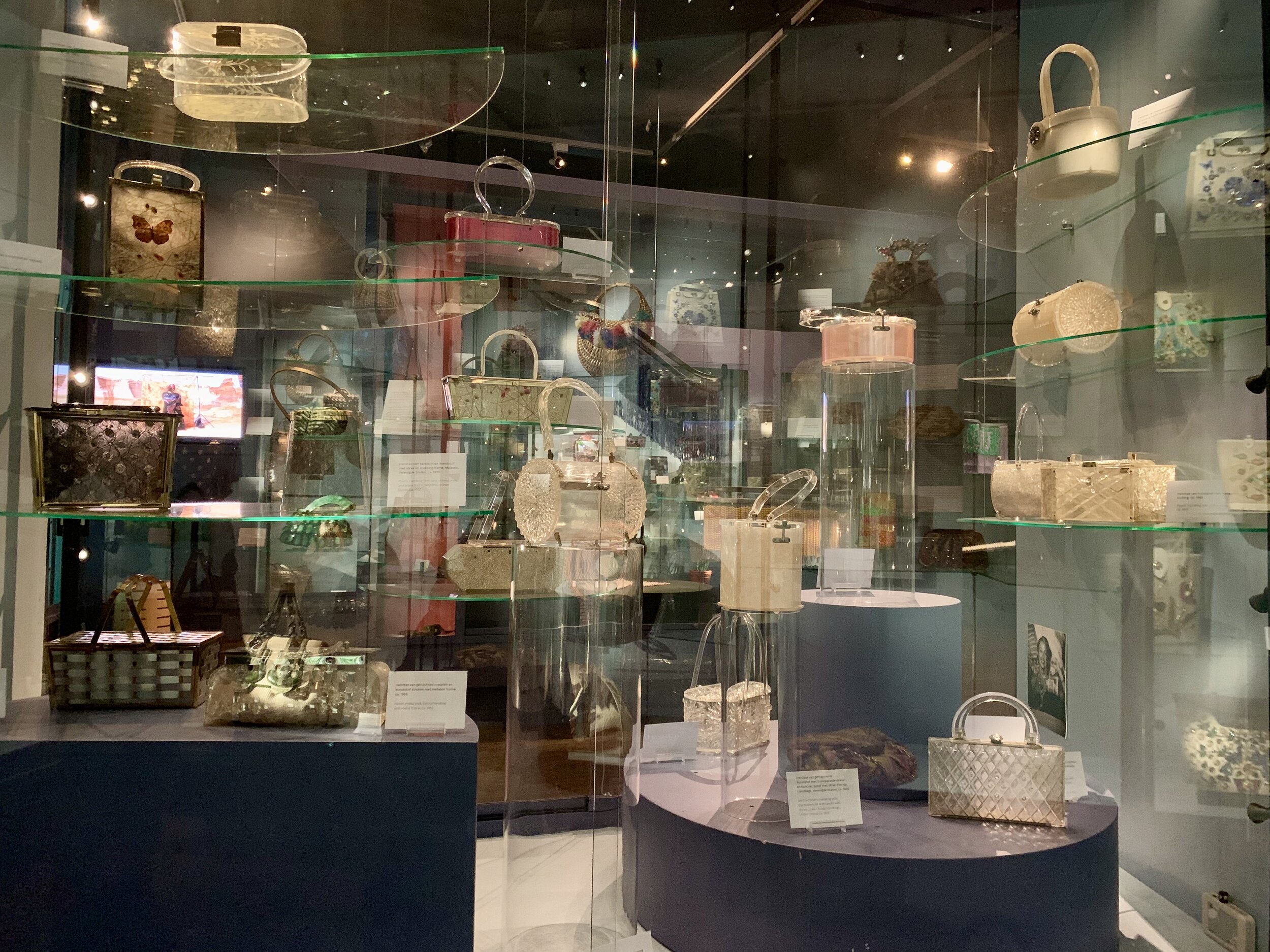The Dutch capital of Amsterdam is home to over 50 museums ranging in topic from torture to tulips to a collection of art featuring cats. Included in this impressive assortment was the Museum of Bags and Purses, an independent institution exploring the the evolution of the bag from a utilitarian item to a fashion accessory. It was located in the city center on the Herengracht in a 17th century canal house built by Cornelis de Graeff, a former mayor of Amsterdam. During the 1960’s, Hendrikje Ivo began collecting handbags along with her husband Heinz and over the next 30 years amassed a collection of over 5,000 bags, purses, and accessories. It was the largest museum in the world to focus on the handbag. Originally housed in their private home in Amstelveen, the museum moved to the canal house in 1997 with the help of a benefactor. The collection presented the history of the bag in western culture from the Middle Ages to the present running the gamut from highly detailed to fairly plain and unassuming.
The permanent items in the collection were displayed on the second and third floors with the first floor being used for temporary exhibitions and a gift shop. A grand wooden staircase ascends to the second floor, home to a small cafe featuring light refreshments and a dedicated tea room complete with a gilded fireplace that overlooks the canal. The museum itself was a series of lit glass display cases accompanied by descriptive text and sometimes video. All types of bags were represented from saddle bags to duffle bags to small jewel encrusted evening bags. There was an assortment of embroidered fabrics, exotic skins, and synthetic materials with some shaped like animals or disguised as ordinary objects. Some of the purses were labeled as being carried by celebrities perhaps in some iconic movie, but there were several that represented the bag of the common man. I was able to recognize several popular designer brands by their signature logos. Most importantly I learned about bag’s rich and diverse history.
Bags and purses are often associated with women, however it is interesting to note that the oldest bags found in the collection were made for men. These bags were used for such things as hunting and traveling. The term “handbag” originally referred to the baggage that men would carry in their hands during their travels. Men began to move away from bags with the increase in clothing featuring interior pockets. Historically, bags could be found hanging from the belt. Around the 16th century women began using a chatelaine. It was a hook attached to the waistband with chains on which items one might deem necessary were hung.
The museum was perfectly overflowing with handbags. There were even bags displayed in the restrooms secured behind glass in small wall niches. As I walked the presentation, I pondered how the bag is both ordinary yet often necessary. How the adaption of the bag has made a significant contribution to our everyday lives. We took time to reflect with lunch in the cafe overlooking the back garden. Being a collector of fashionable items, I myself have a modest collection of bags and purses of various shapes, sizes, and materials. They are meant to represent not only my personal taste, but my varying needs.
Before exiting through the gift shop, I purchased a catalog of a selection of the museum’s permanent collection and a poster that currently hangs in my daughter’s room. The hefty glossy paperback was written by Sigrid Ivo, former director and daughter of the founders. It includes detailed photographs and complimentary text in English, Dutch, French, and Spanish.
The novel Corona virus pandemic has effected the lives and businesses of the global community with the museum industry being no exception. In March of 2020, the Museum of Bags and Purses made the heart breaking decision to close their doors permanently due to a lack of funding, sponsorships, and what the official closure statement noted as an “insufficient perspective for the future.”
I was fortunate enough to experience the Museum of Bags and Purses in all of its glory. The stated goal is to keep the entire collection intact and I do hope that it can be one day shared with the public again. Museums are an essential part of society in preserving culture and historical importance. The closing of one of only a handful of museums dedicated to an accessory is not only a loss to the fashion community, but to the museum community as a whole.
PHOTOS BY ADB








